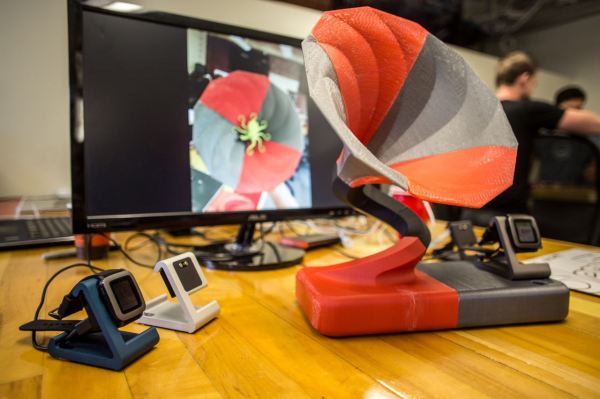One more go at new enclosures for the Amiga 1200. Yes, it’s a Kickstarter campaign, and we mentioned a similar the same campaign last month. The previous campaign received a little more than half of the desired funding in a 30-day campaign. The new campaign received half its funding in a week. The only difference? Now you can put a Raspberry Pi in a newly manufactured A1200 case. And they say Raspberry Pi consumerism isn’t a thing…
Cheap SLA printing service. [Ian] and Dangerous Prototypes have made a name for themselves with dirt cheap, acceptable quality PCBs. Now they’re going for custom prints on a resin machine. It’s $0.95 per gram (density is 1.3g/cc). That’s cheap.
[James Willis] built a floppy drive orchestra. There are 16 drives in this orchestra, all controlled by an FPGA. Here’s the writeup.
Here’s a video overview of a real, huge, rideable hexapod robot. ‘Wow’ is just about the only thing we got for this.
Western Digital introduced a hard drive made specifically for the Raspberry Pi. It’s a hard drive with a USB interface, and a USB cable that connects to the Pi, the drive, and a power adapter. In other news, externally powered USB hard drives exist. You can buy a 2TB drive for the price of the 1TB PiDrive. What was that thing about Raspi consumerism?
Next week is the Open Hardware Summit in Philadelphia. We’ll be there (or rather, I will). We’ll have a post on the OHS badge up on Monday. Would anyone like to go see the lady made out of soap? It’s right around the corner from the venue.

















